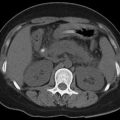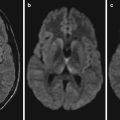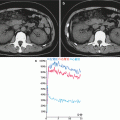© Springer Science+Business Media Dordrecht and People’s Medical Publishing House 2015
Hongjun Li (ed.)Radiology of Infectious Diseases: Volume 110.1007/978-94-017-9882-2_66. Genetic Basis of Infectious Diseases
(1)
CT Department, The Second Affiliated Hospital, Harbin Medical University, Harbin, Heilongjiang, China
(2)
Department of Radiology, City Kangan Hospital (Former City Hospital for Infectious Diseases), Mudanjiang, Heilongjiang, China
(3)
Department of Radiology, City Development District Hospital, Yantai, Shandong, China
6.1 Molecular Genetic Basis of Microorganisms
Infectious disease can be caused by viruses, prions, bacteria, fungi, protozoa, worms, and arthropods. The microbiological basis of infectious disease involves wide range of knowledge, including structures, pathogenicity, immunity, replication and growth, heredity and variation, sensibility and resistance mechanism of anti-infective drugs, and resistance to external environment of various microorganisms. All of these aspects directly exert effects on the type, severity, and prognosis of the infectious diseases. With the development of molecular biology and molecular genetics, the knowledge about the structures and pathogenic mechanism of microorganisms has been further explored at the molecular and genetic level. For instance, for completion of the human genome project, the gene sequences that encode and regulate the structures and functions of exotoxin, endotoxin, invasive protein, adhesin, virus structural protein, and nonstructural protein of pathogenic microorganisms have been gradually decoded. All of these efforts and achievements greatly expand our knowledge about the relationship between microorganisms and their hosts.
6.2 Prion
Prion, an infectious protein agent without nucleic acids, is composed of only one type of prion protein (PrP). Prion was formerly known as prion virus. Nevertheless, considering its only content of PrP, its categorization into virus is obviously inappropriate. Currently, the nomination of prion virus is commonly unacknowledged. PrP, with an abnormal structure, is actually encoded by the host’s normal genes after the infection, which is capable of self-replicating. Prion can cause transmissible spongiform encephalopathies in both humans and animals, including scrapie, bovine spongiform encephalopathy (also known as mad cow disease), and human kuru disease, and human Creutzfeldt-Jakob disease.
Stay updated, free articles. Join our Telegram channel

Full access? Get Clinical Tree






